CONSIDERING MEDICAL FITNESS?

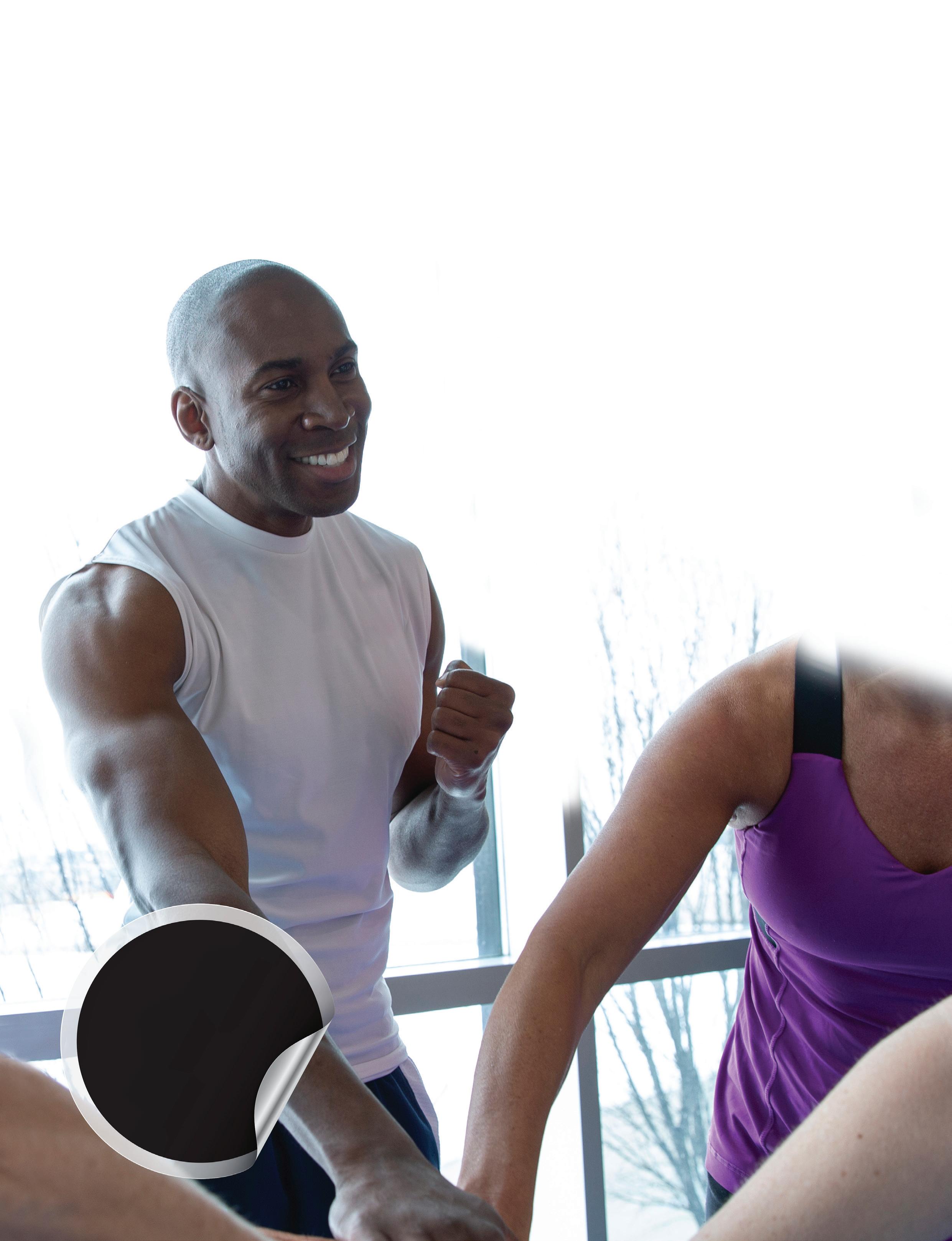
THE DOS AND DON’TS OF POSTPREGNANCY FITNESS
WHICH CEU S ARE RIGHT FOR YOU?
The question should always be asked, “How will this benefit my clients?”
WWW.PERSONALFITNESSPROFESSIONAL.COM FALL 2023 SPECIALTY CERTIFICATIONS AND CONTINUING EDUCATION PAGE 24
Look Inside for the FiTOUR CEC Course Giveaway!
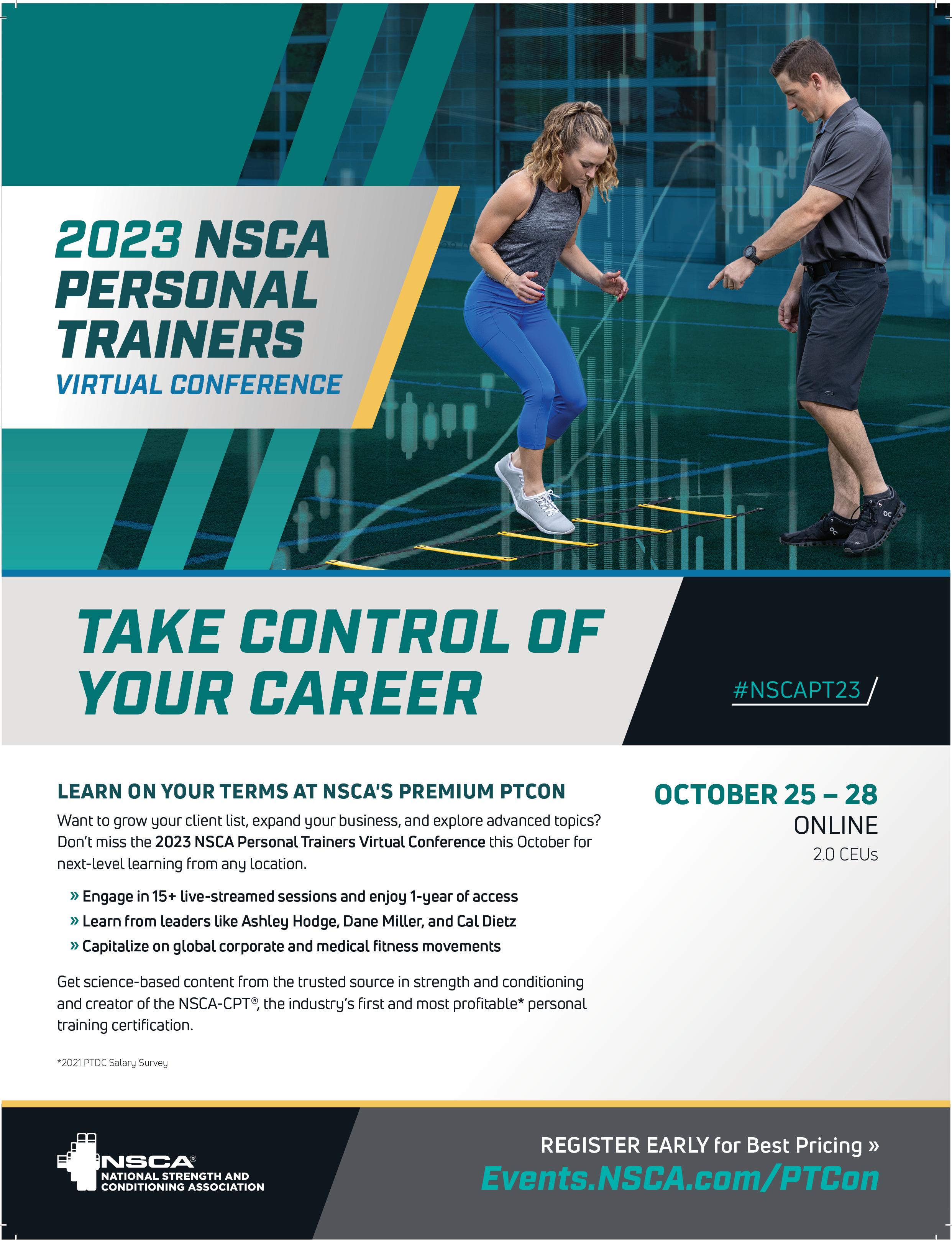


VOLUME 25 | ISSUE 3
president
chad griepentrog | chad.g@rbpub.com
publisher josh vogt | josh@rbpub.com
editor
erin eagan | erin@rbpub.com
audience development manager
rachel spahr | rachel@rbpub.com
national media consultant
josh vogt | josh@rbpub.com
creative director
kelli cooke | kelli.c@rbpub.com
contributing writers
Nicole Arseneau, Elena Biedert, Dr. Meredith Butulis, Manny Escalante, Brandon Hyatt, Evina Del Pizzo, Aesha Tahir
featured columnists
Brandi Binkley, Trina Gray, Dan Ritchie, Pat Rigsby, Kurt Weinreich Jr.
By Dr. Adrienne Ione
P.O. Box 259098 | Madison WI 53725-9098.
Tel: 608.241.8777
Email: customerservice@rbpub.com
Print Subscription Information
Subscriptions are free to qualified recipients: $36 per year to all others in the United States. Subscriptions rate for Canada or Mexico is $60 per year, and for elsewhere outside the United States is $80. Back-issue rate is $5.
Send subscriptions to:
By mail: Personal Fitness Professional, P.O. Box 259098 Madison WI 53725-9098
Tel: 608.241.8777
E-mail: rbpub@rbpub.com
Fax: 608.241.8666
Website: www.PersonalFitnessProfessional.com
Digital Print Subscription Information
Digital Subscriptions to Personal Fitness Professional are free to qualified recipients and may be ordered at www. PersonalFitnessProfessional.com/subscribe.
Reprints
For high-quality reprints, please contact us at 608.241.8777
All material in this magazine is copyrighted ©2023 by MadMen3 All rights reserved. Nothing may be reproduced in whole or in part without written permission from the publisher. Any correspondence sent to Personal Fitness Professional, MadMen3 or its staff becomes property of MadMen3.
The articles in this magazine represent the views of the authors and not those of MadMen3 or Personal Fitness Professional. MadMen3 and/or Personal Fitness Professional expressly disclaim any liability for the products or services sold or otherwise endorsed by advertisers or authors included in this magazine.
Personal Fitness Professional (ISSN 1523-780X) is published quarterly: Spring, Summer, Fall, and Winter. [Volume 25, Issue 3] Published by MadMen3, LLC
By Dan Ritchie
Continuing Education
Specializing in your specialization
By Kurt Weinreich Jr.
Career Accelerator
SWOT: The business longevity and growth solution
By Brandi Binkley
Ask the Experts: Physical Therapy
By Pat Rigsby
Part 2: Neuromuscular mapping for post-rehab clients
By Dr. Meredith Butulis
Diversity, Equity and Inclusion
By Trina Gray
Unraveling the distinction between fitness professionals and fitness influencers

 By Gail Bannister-Munn
By Gail Bannister-Munn
Tel:
mailing offices. POSTMASTER: Send address changes to: Personal Fitness Professional | P.O. Box 259098 | Madison WI 53725-9098. One-Minute Practice: Honoring our internal fire
C/O Chad Griepentrog 708 Mohawk Trail DeForest WI 53532-3035
608.241.8777 Periodicals postage paid at DeForest, WI and additional
Training for Function Training your clients for what they like to do and want to do in life
Elevate Online Presence A different way of thinking about continuing education
Real Talk: Lessons Behind Success What industry do YOU want to be a part of?
New on the Market 06 06 09 07 09 08 10 30 28 08 Letter from the Advisory Board Continuing education is nourishment Farel Hruska COLUMNS DEPARTMENTS 12 16
Nutrient Timing
Don’t miss the window of opportunity
By Aesha Tahir
Considering Medical Fitness?
Earn trust as a referral resource for healthcare professionals and equip yourself with the essential knowledge to work safely and effectively with clients
By Brandon Hyatt
Which CEUs Are Right for You?


The question should always be asked, “How will this benefit my clients?”
By Evina Del Pizzo
How Genes Influence Physical Fitness

Genetic testing has changed our approach in determining what works best for each individual
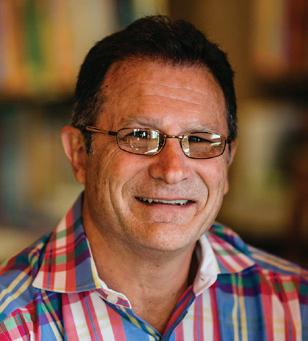
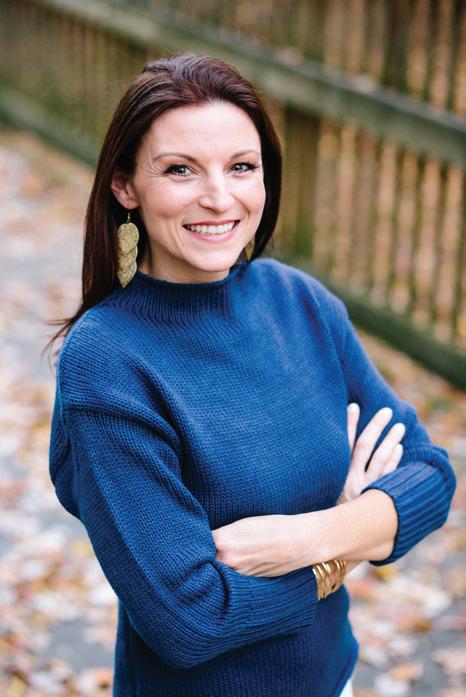 By Nicole Arseneau
By Nicole Arseneau
OUR ADVISORY BOARD
A Systematized and Well-Executed Referral System
5 foundational marketing tactics you know (but you aren’t executing)
By Manny Escalante
The Dos and Don’ts of Post-Pregnancy Fitness

An essential approach requires sensitivity and knowledge
By Elena Biedert
Position Yourself as an Expert Specialty certifications and continuing education opportunities for fitness professionals



FALL 2023 | WWW.PERSONALFITNESSPROFESSIONAL.COM | 5
12
20 22
14 16 18 20 22 24 FEATURES
SOCIAL MEDIA pfpmedia pfpmedia pfpmedia pfpmedia pfpmedia Subscribe to PFP today.
Lindsay Vastola Greg Justice Farel Hruska Joey Percia
LETTER FROM THE ADVISORY BOARD
By Farel Hruska
Continuing education is nourishment
“By improving yourself, the world is made better. Be not afraid of growing too slowly. Be afraid only of standing still.” — Benjamin
Franklin
Our personal and professional growth is fueled by our consistent desire to do better. We can strive to do better in our personal lives, our careers, for those around us and in our communities. In this issue, we have gathered experts to speak on topics like potential new areas of fitness to pursue, finding CEUs that could be right for you in your professional journey, exploring the distinction of fitness professionals and fitness influencers… among other things. There are so many avenues to our personal and professional growth that sometimes it feels a bit paralyzing. Where do I lean in? Will it help to build my clientele? What’s the best for the growth of my business? Is it even worth my time and resources?
One of the articles in this issue speaks about postnatal fitness — and that’s where I have a default in my personal “lean in.” After becoming a mom in 2000, I found myself in a space of paralysis because I was a fitness professional without resources around this incredibly important and meaningful stage of my life. Soon I became a mom of two girls and then three girls, and in tandem, I progressively became a subject matter expert in all things pre and postnatal fitness. My work evolved to reach fitness professionals here in the US through live conferences, webinars and other sources of accredited continuing education and then, internationally. I educated and presented to fit pros in Dubai, China, Korea, India, Bangkok and Egypt about the most current, researched and effective ways to train the pre and postnatal woman physically, mentally and emotionally. My own life experience led me to grow my expertise in what eventually became one of the areas that I was and still am sought after in global fitness education.
Continuing education is nourishment; we crave it for growth and expansion of our potential impact. As we grow in this industry, be open to growing for your own sake, as well. Find ways to scratch that itch… it may feel like it is something “selfish;” however, eventually you may see the immense impact it can have beyond you alone.
PFP Advisory Board Member Farel Hruska has over 20 years of experience as a personal trainer, group fitness instructor and educator. She is currently Director of Learning and Development at EoS Fitness. Farel also helped grow FIT4MOM from 2002-2018 as Global Fitness Director and Pre/Postnatal Director. She has presented at fitness conferences around the world including AFC (Bangkok), MEFIT PRO (Dubai), IDEA China and US and has been featured in CNN, New York Times, WebMD, Women's Running Magazine, and Pregnancy.com. Farel’s most meaningful accomplishment, however, is being mom to her three daughters.

ONE-MINUTE PRACTICE: PRESENT MOMENT AWARENESS
By Dr. Adrienne Ione Yes2Aging.com
Honoring Our Internal Fire
As we move into the Fall season, with cooling external temperatures, why might it be important to remain aware of everlasting internal fire? Let’s focus on three physiologically reasons for maintaining awareness of internal temperatures: digestion, muscle contraction and inhalation.
The digestive system powers the conversion of food into energy, nutrient absorption and elimination of indigestible food. Second, when we engage in activities that necessitate muscle contraction, the body produces heat. Our muscles store a bit of energy, and when these stores are used up, if we want to continue the activity then the body needs to produce more energy for continued muscle contraction. Third, during the inhalation process, the diaphragm contracts, pulls downward and simultaneously the intercostal muscles (between the ribs) contract and pull upward — these combined actions allow space for the lungs to fill with oxygen. In each of these three examples, internal heat increases.
We can explore another physiological explanation of balancing internal fire by turning to Vedic tradition, or yogic science. Simple life experiences depend on the production of bodily heat. Specifically, one wheel of energy — the manipura chakra — exists at the solar plexus. The main organ at this energy point is the pancreas. Two glands are housed within the pancreas: exocrine glands aiding in digestion and endocrine glands that control blood sugar. Balancing or regulating this wheel can occur through engagement in energy extension or expansion.
Let’s engage in a 1-minute practice of honoring the internal fire that continues to burn even as the heat of the external environment diminishes during the fall season.
1. Locate and acknowledge the belly: say, “Hello belly. Thank you for burning consistently.”
2. Create a comfortable rhythm: inhale and exhale equally forcefully through the nose. Feel the “motion of a pair of bellows being pumped.”
3. Discover the heat within: focus on internal belly movement.
4. Feel the heat: with one hand gently on the belly – notice, observe, feel.
Repeat steps one through four.
6 | WWW.PERSONALFITNESSPROFESSIONAL.COM | FALL 2023
By Dr. Dan Ritchie FunctionalAgingInstitute.com
Training Your Clients for What They Like to Do and Want to Do in Life
Here at FAI we talk all the time about training your clients for ‘need to do,’ ‘like to do,’ and ‘want to do’ activities. We constantly stress that you should keep your program design focused on what clients like and want to do in life.
Sometimes as trainers we forget about our clients’ goals and dreams, and we start training sets and reps.
This summer, I had the great joy of attending a Yankees game for the first time in my life. I would say that has to fit in the want to do or even dream to do activity list! It is not something I will get to do often, so I started to get a little nostalgic thinking about taking my two sons with me, one of whom is a really big Cubs fan and was super excited to get to see the Cubs play in Yankee Stadium.

Now, this wasn’t a massively challenging functional task,
but I started to take note as we entered the subway station, counting how many stairs and people we had to navigate. Standing on a subway train, my 14-year-old son Ryan noticed quickly that it took some reactive balance… and you were likely to get bumped into!
We stopped off at Times Square since Ryan had never seen it, and then we added several thousand steps in a large crowd and an overwhelming amount of external stimulus. Even Ryan found it to be a little too much, and we headed back to the subway and on to the Bronx.
After climbing out of the subway station for the second time in less than an hour (more stairs), we entered the long line to enter the stadium, and after a few thousand more steps and more stairs, we found our seats. Then, after an historic Cubs win 3-0 (the Cubs had never won in Yankee Stadium in 12 previous tries), we had to do it all over again: stairs, crowds, curbs, subways swaying packed with people, etc.
I can’t imagine missing it with Luke and Ryan because it was too many steps, too many stairs, too tiring, or even a possible fall risk. I tallied 10,916 steps that Friday afternoon/evening, and now the 3 of us forever have the memory of being in Yankee Stadium together. We got to see the Cubbies get their first ever win and Fly the W at Yankee Stadium!
Sometimes we overthink fitness. All we really need to do is train people so they can have these experiences with their loved ones and do them with ease and enjoyment. In fact, when we look at the 6-domains of function chart, we see we have to be training in each of these areas to be able to handle a trip to a major city ballgame. Even the cognitive component was significant as there were signs to notice and so many stimuli from so many different places to manage.
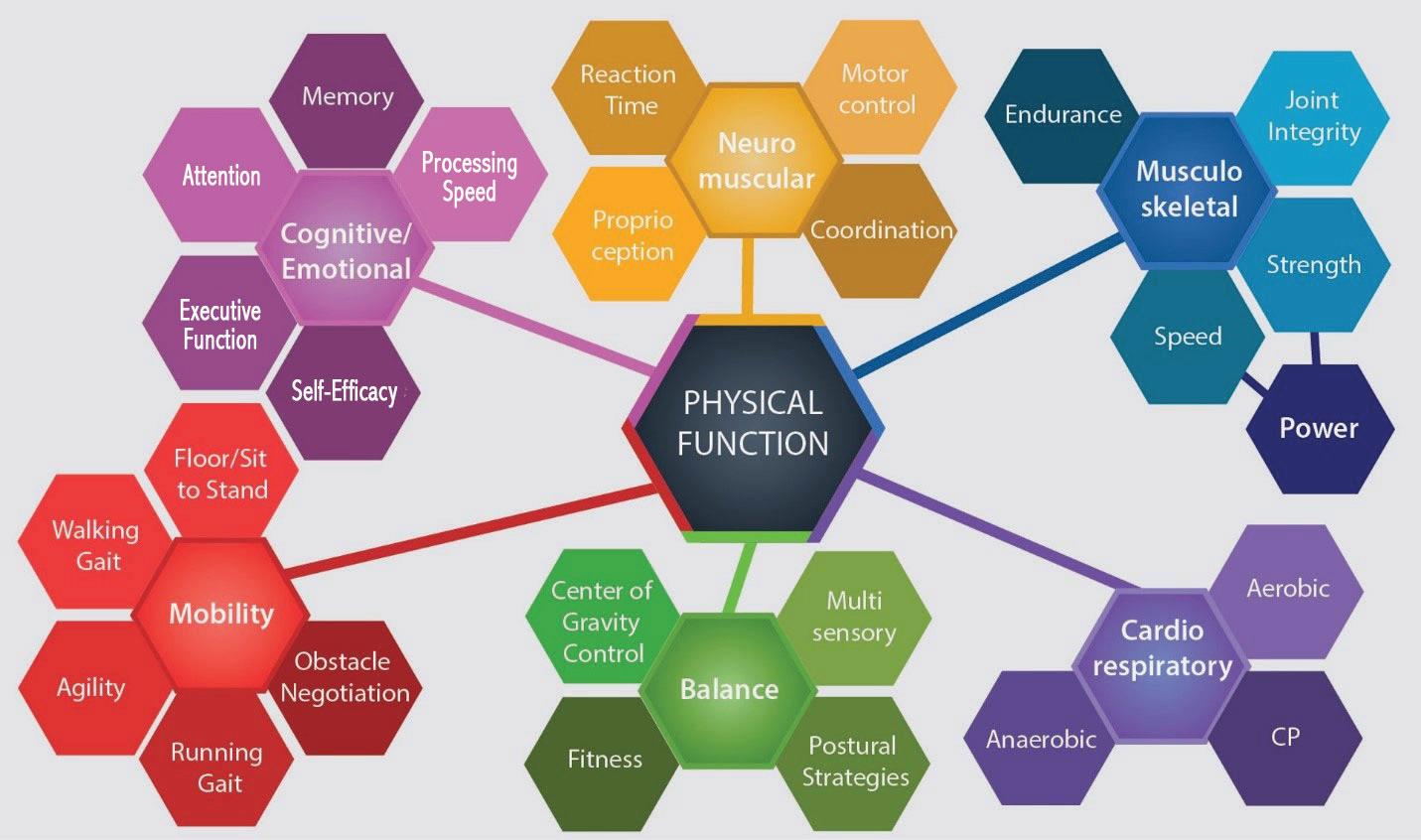
If you are training your clients so they can have even more memorable peak experiences in life, then you will become an indispensable resource in their journey for years to come.
Dr. Dan Ritchie is the president and co-founder of the Functional Aging Institute. Dan also owns and operates Miracles Fitness in West Lafayette, Indiana, where they have trained over 2,500 clients since 2007. Dan was the 2014 PFP Trainer of the Year and is a sought-after expert and speaker at national and international events on topics like balance for older adults, fitness business development, the global aging phenomenon, and functional aging training models. Learn more at www.functionalaginginstitute.com.

FALL 2023 | WWW.PERSONALFITNESSPROFESSIONAL.COM | 7
TRAINING FOR FUNCTION
ELEVATE YOUR ONLINE PRESENCE
By Pat Rigsby PatRigsby.com
A different way of thinking about continuing education
Continuing education is a popular topic in the fitness industry. Between the continual need to stay current with credentials, the specific requirements you must meet and the annual live events that are available, continuing education likely stays on your radar. I wanted to share a different way of looking at your own approach to continuing ed. Here are a few things to consider:
100% of successful professionals I’ve met are people who I’d consider lifelong learners. They are in continual pursuit of a better way, whether it’s growing a business or serving a client.
Education isn’t only available through structured courses or live events. Many of my important learning experiences have come from studying other businesses, observing human behavior and learning from my mistakes. In fact, I’d tell you that if you only learn from structured programs, you’re missing out on most of what you should be learning.
Spend more time learning about the things that won’t change or, at least, won’t change quickly. Far too much time is spent studying fads or short-term tactics, and far too little time is invested in studying timeless principles and strategies.
Be curious. I’ve seen more than a few coaches and trainers build great careers by becoming experts in areas that began as curiosity-based research.
Learn business if you’re going to own a business. More than half of the trainers I meet who start a business do so without much, if any, business education.
Study successful people. Biographies, private coaching and internships can compress time and give you the key learning experiences accrued over someone’s career in a fraction of the time it took the expert to amass them.
Apply what you learn. I’ve seen far too many people attend a live event, take pages of notes and then go back to work on Monday, only to do things exactly as they’ve always done them. There are more great learning opportunities than any of us can hope to take advantage of, so select wisely and make the most of the ones you choose.
REAL TALK: LESSONS BEHIND SUCCESS
By Trina Gray TeamRockstarFit.com
What industry do YOU want to be a part of?
Like many of you, I grew up an athlete but lost my way in college. The party scene at the University of Wisconsin lives up to its reputation. I participated in the tailgates and late-night burritos. To get on track, I went to the student recreation center. I walked in with my CD walkman, and walked out — it was like navigating the jungle without a map. Soon after, I joined a family-owned health club. There I changed the trajectory of my life. I found group fitness and felt at home. The instructors were welcoming and didn’t flaunt their expertise. They delivered amazing experiences.
The group exercise director invited me to become an instructor and the entire world of fitness opened. I pursued certifications, traveled to industry conferences, and was blown away by the welcoming vibes and down-to-earth presenters. The industry took me in as a newbie, without any degrees or experience. Since then, I’ve built an entire career — a health club owner, a national presenter, author, and top leader in BODi. But I never forget where I started. I still teach group fitness because it reminds me of my roots. I pay it forward by mentoring newcomers— from group ex instructors to online coaches with BODi year-round.
I’ve read some disheartening commentary on social media this year, ridiculing newcomers, criticizing health coaches, and putting veterans on an untouchable pedestal. We are an industry that inspires people to better their lives with fitness, nutrition and mindset. It is not our job to micromanage how our peers operate. It is our job to invest in ourselves, our own continuing education and keep evolving. We need to be open minded to new ways of doing business. Instead of criticizing the state of the industry, it is our job to mentor and inspire the next generation of fitness professionals.
My son Colt earned his CPT this year, before embarking to a military academy. I watched his incredible transformation and witnessed how he’s consumed knowledge. Eventually he pursued an accredited certification to start helping others. He took on clients and loved every minute. He’s green and he’s eager. Let’s be inclusive and lift fellow fit pros up, no matter what path they choose to deliver their services. We are on the same mission to change lives.
Pat Rigsby is one of the fitness industry's leading business coaches and the owner of PatRigsby.com. He has built over a dozen businesses in the fitness industry as a CEO and co-owner, ranging from two-award winning franchises to certification organizations and equipment companies. Now he focuses exclusively on helping fitness entrepreneurs build their ideal businesses.

Trina Gray is a leading entrepreneur in the fitness industry with 20 years of experience. She owns Bay Athletic Club, an award-winning medical based health club in Michigan. She helps women in fitness expand their income to reach more people, outside of sessions and classes. She’s a sought-after presenter and mentor, who has simplified her life. Connect with her at www.teamrockstarfit.com or on Instagram @trinagray.

8 | WWW.PERSONALFITNESSPROFESSIONAL.COM | FALL 2023
By Kurt Weinreich Jr. KurtWeinreich.ISSACertifiedTrainer.com
Specializing in your specialization
It is invaluable to set yourself apart in the fitness industry by finding specializations that you are passionate about, have a high degree of experience in, or meet the needs of your current demographics. Fitness professionals can take that step further by becoming the authority in those areas by “specializing in your specialization.” Directing your continuing education towards a specific path can greatly enhance your current credential with additional knowledge and respect.
This is accomplished by choosing specific courses that will add auxiliary credentials to the baseline foundation. Specialty certifications, continuing education, internships, product analysis, practical clinics and even volunteering can all be combined to enhance the trainer’s ability to become more experienced in their chosen niche.
Here are some example fields of potential combinations to get inspiration
Specialization in Nutrition Coaching: Add credentials in meal planning, food labels, portion control, fitness cooking, food logging, motivational interviewing and goal setting.
Specialization in Older Adults: Try adding credentials in corrective exercise, stabilization, chronic illness, balance, cardiovascular, mobility, reactive training and flexibility.
Specialization in Kickboxing Fitness: Add credentials in boxing coaching, focus pad training, muay thai kickboxing, agility ladder, speed drills and jumping rope.
Specialization in Wellness Recovery: Add credentials in mindfulness, guided meditation, flexibility, tai chi, sleep recovery, assisted stretching, percussion gun and stress relief.
All of the suggestions listed have specific certification courses that can add not only credibility, but allow the fitness professional to become more versatile in the subject matter with the goal of articulating that information to a client on a deeper level. Applied research will also allow applications to cross over into other fields. For example, I have recently transitioned into tactical conditioning field that requires all of the previously mentioned courses while adding additional subjects to address the unique needs of law enforcement.
Continuing ed is not only the preferred way of keeping your certifications current, it is also an avenue to create your uniqueness through specializations. Fitness pros can further enhance their authority in their specialty by focusing ancillary education with that goal in mind.
CAREER ACCELERATOR
By Brandi Binkley GetPhysioFit.com
SWOT: The business longevity and growth solution
For many coaches, life is spent in the grind of finding clients, keeping them healthy and nurturing the relationship. We are often so distracted by everything and everyone around us that we that we fail miserably at understanding, managing and growing our businesses. In the book The E-Myth the author lays out three types on business personalities: the entrepreneur, the manager and the technician, and studies show that of small businesses 70% are owned by technicians. Most of us, especially in the fitness industry, start out as technicians, which leaves us fumbling across the finish line every month, quarter and year trying to figure out the best way forward. We end up making less money than we would like to and burned out to the point of exhaustion. This does not have to be your story. A great tool like the SWOT (Strengths, Weaknesses, Opportunities and Threats) analysis can shift the narrative for you and your company.
Although the SWOT is quite simplistic, it is comprehensive. For most, the greatest benefits will come from identifying and creating a strategic plan around the following:
Strengths: Recognizing what is unique about you/your business; Leveraging education, certs, special training and your accomplishments


Weaknesses: Identifying skill gaps and limitations; Listing areas where professional development is needed
Opportunities: Exploring trends and emerging market shifts; Expanding on what you or your team are already doing well
Threats: Anticipating seasonal challenges; Forecasting any political/ economical shifts; What/who is putting your business at risk? This can be positive and negative.
Once items for your specific business or life are identified, compile them to create an action plan based on the results. For example, if a threat in your analysis is not having enough training to be a well-rounded coach or team, then outline how you will achieve becoming a more well-rounded coach. This is where you schedule conferences, sign up to learn a new method of stretching or whatever it is that helps you stand out among those around you. The point is that you need to do more than just fill in the blanks here. Fill the blanks in, give each item a clear due date, and do a quarterly follow-up with a mentor or someone on your team to keep you on track.
FALL 2023 | WWW.PERSONALFITNESSPROFESSIONAL.COM | 9
Brandi Binkley has been an Exercise Physiologist for 19 years. She has served as a consultant to the Department of Defense, Alpha Warrior, Technogym, and multiple healthcare companies. Brandi also spends her time serving on the board for End Slavery TN, Tennessee State NSCA Advisory, C12, and The Todd Durkin Mastermind.
Kurt Weinreich has over 24 years of experience in the fitness industry as a trainer, educator and fitness manager. Kurt is currently managing the Wellness Program for the Jefferson County Sheriff’s Office while developing fitness professionals through consulting, lectures and internship programs to assist with skillsets in coaching, marketing, education and business.
CONTINUING EDUCATION
ASK THE EXPERTS: PHYSICAL THERAPY
 By Dr. Meredith Butulis MeredithButulis.com
By Dr. Meredith Butulis MeredithButulis.com
BUILD YOUR CUEING STRATEGY
Part 2: Neuromuscular mapping for post-rehab clients
By Dr. Meredith Butulis

Have you ever said something really important, but felt disappointed by the response? In reflection, might the response have been different had you changed the timing, or audience? Movement cueing works in the same way. For example, if you cue a client to “pull fast,” when initiating a barbell clean from floor level, what happens? The client is more likely to hit his/her knees with the bar, as opposed to achieving the goal of a
higher velocity clean. The bar smashing knee response is even more likely if the movement is new to the client.
With post-rehab clients, your careful attention to cue timing is paramount. Their motor memory tells them to complete movements the same way they used to. However, injury or surgery changes not just muscles, bones, ligaments, tendons and fascia, but also neuromuscular control. The finely orchestrated sensory processing and motor unit synchronization for
efficient movement is out of tune. As a fitness professional, you are the orchestra’s conductor. It is within your scope to identify the new neuromuscular needs, then deliver the right type of cues at just the right time for efficient effective performance that leads to progress instead of plateaus or re-injury.
After reading part 1 of this 3-part article series in the previous issue of PFP, continue with this article where you will build your clients’ neuromuscular maps. These maps will serve as the individualized blueprint when we overlay cue timing in part 3 of this series. Don’t wait for part 3 to be published! Since part 3 builds on parts 1 and 2, you need to do your homework with your clients first.
How to build your client’s neuromuscular maps
Building your client’s neuromuscular map is like re-identifying your audience’s current needs one person and one movement at a time. Once you map the unique abilities and needs, cue timing can be tied to the client’s re-learning stage for each specific movement or skill.
Based on the classic Fitts and Posner model, motor learning can be divided into three stages: cognitive, associative, or autonomous. Cognitive (stage 1) means the client needs to explicitly think about movement steps. Autonomous (stage 3) means the movement is automatic without much conscious thought. The associative phase (stage 2) is where clients spend most of their time as they balance conscious thought with automatic movements, leading to variable movement performance. The client’s classifications begin with movement screening from a new perspective.
When a client comes back from physical therapy or other rehab, start with the full body basics. I had a client reach rep failure on the bench press pre-maturely after an arthroscopic hip labral repair surgery. I inquired: “Where did you feel fatigue?” He replied “my hamstrings cramped up,” as he pointed to his legs. While I was not expecting his response, it made sense. In compound movements, the
10 | WWW.PERSONALFITNESSPROFESSIONAL.COM | FALL 2023
arms are a reflection from the leg and core strength and stability. The weakest link will give first. That lesson reminded me that all body parts affect all other parts, so post-rehab clients need full body neuromuscular maps as opposed to segmented parts.
Build your maps by looking at the client’s ability to:
Squat
Lunge
Deadlift
Stand on one foot
Step up
Change directions
Run (if desired)
Push horizontally & vertically
Pull horizontally & vertically
Just like a standard movement screen, observe several repetitions of the movement from the front, side and back. Instead of looking for traditional deviations and muscle imbalances, add the neuromuscular perspective by asking different questions about your observations:
1. Does the movement appear smooth and almost effortless?
2. Are distinct moments of stillness clear and consistent between reps?
3. Is the movement strategy consistent over most repetitions performed?
4. Are the head, shoulders, hips, knees and toes (kinetic chain) where you expect them to be relative to each other in all movement phases?
5. How much feedback does the client seek or require? This can include verbal feedback, deliberate use of vision on a focal point or in a mirror, or attempts to increase tactile feedback.
Answer questions 1-4 with a “yes,” “no,” or “somewhat.” Answer question 5 with “minimal,” “lots,” or “moderate.” Use the table below to map the responses for each movement.
How to score and interpret your client’s neuromuscular maps
Now that you have completed the tables, score and classify the findings. For each movement, tally the number of responses you have circled in each column. Classify the client’s current skill capability into the column with the highest tally. If the results are split, classify the movement into the lower stage. For example, if the squat movement tally is Stage 1: 2 circles, Stage 2: 2 circles, Stage 3: 1 circle, classify the movement as Stage 1.

When interpreting results, respect that clients may be in different learning phases for different movements. For example, the client
might demonstrate autonomic level squat skill, while demonstrating cognitive level lunge skill. Cueing strategy should match the specific skill.
Next steps
Start adding even more value to your client sessions by developing neuromuscular maps for all of your post-rehab client’s key movements now. For already established clients, try building one map each week by sprinkling a key movement into the dynamic warm-up section of your current training sessions. For new clients, consider using your initial sessions to build the maps. Neuromuscular maps will serve as tools to pre-identify; plateaus before your client feels stuck, minimize re-injury risk by developing new efficient; and effective movement patterns before adding too much load, speed or variation, and build client motivation by uncovering new micro PRs in every session.
Once you have the maps, start applying the cues from part 1 in this series. Reflect on which cues are working best for each phase. Don’t be afraid to experiment and practice reflecting learning within the boundaries of safe movement. After you do your homework, come back for part 3 in the next issue of PFP. Part 3 is where the magic happens! I will show you the secret cue timing overlay onto your clients’ neuromuscular maps. If you and your clients love celebrating micro PRs in every session, prepare for an endless number of wins when you apply all 3 parts of the cueing post-rehab series.
Dr. Meredith Butulis, DPT, OCS, CEP, CSCS, CPT, PES, CES, BCS, Pilates-certified, Yoga-certified, has been working in the fitness and rehabilitation fields since 1998. She is the creator of the Fitness Comeback Coaching Certification, author of the Mobility | Stability Equation series, Host of the “Fitness Comeback Coaching Podcast,” and Assistant Professor the State College of Florida. She shares her background to help us reflect on our professional fitness practices from new perspectives that can help us all grow together in the industry. Instagram: @Dr.MeredithButulis.
FALL 2023 | WWW.PERSONALFITNESSPROFESSIONAL.COM | 11
FEATURE ARTICLE
By Aesha Tahir ToneAndStrengthen.com

NUTRIENT TIMING
Don’t miss the window of opportunity
|
By Aesha Tahir
Energy is required for everything we do! Energy means, “the strength and vitality required for sustained physical or mental activity.” No matter what the activity, our body uses nutrients to produce energy that is used during exercise.
Nutrient timing includes the manipulation of food intake around exercise sessions to improve performance, recovery, and adaptation.
Nutrient Timing Benefits: Three sciencebacked benefits of nutrient timing around and during the workout are:
1. Improved Performance: Endurance training and power sports rely heavily on the glycolytic energy system. This means that the body prefers to use carbohydrates for energy. Eating carbs leads to greater power output and endurance.
2. Stress Hormone Reduction: During a vigorous workout, the body produces catabolic
hormones like cortisol. Catabolic hormones break down muscle tissue. Eating carbohydrates after a workout increases insulin and balances the cortisol levels which reduces the muscle damage.
3. Lower Inflammation: Physical stress from intense or long workouts can result in free radicals and inflammation. But a post-workout meal high in protein and carbs can significantly reduce immune system suppression, thereby improving overall health.
Hitting the nutrient intake goals before, during and after the workouts is as important as planning the exercise sessions for your clients. It can provide your clients with the performance edge they are looking for. Let’s explore how nutrient consumption around the exercise session can be used to elevate your client’s performance.
Pre-Workout Nutrition: Eating a small snack rich in carbohydrates before the workout can
provide sustained energy for the workout. The main objective of a pre-workout snack is to replenish glycogen, the short-term storage form of carbohydrate. This immediately supplies the energy needed for exercise. It is crucial for morning workouts, when the liver glycogen is depleted from fueling the nervous system during sleep.
To get the most out of the workouts, your clients need to eat a 150- to 200-calorie carb rich snack 30 to 60 minutes before the training session. Eating foods that are high in simple sugars will provide an immediate source of fuel during the training. Including some protein can be helpful, but it’s better to keep it to a very small quantity. Protein takes longer to digest than carbohydrates and doesn’t provide immediate energy for physical activity. It’s best to avoid fat and fiber-rich foods before workouts as they can upset the digestive tract. Some examples of pre-workout snack are: a banana, whole
12 | WWW.PERSONALFITNESSPROFESSIONAL.COM | FALL 2023
wheat toast with peanut butter, ½ cup low-fat yogurt with berries and an orange.
Intra-Workout Nutrition: Carbohydrate consumption during training provides energy and prevents fatigue. To meet the body’s need for fuel, aim for 30 grams of carbohydrate per hour for training sessions that last between 1 hour to 3 hours.
Intra-workout supplementation is dependent on the length of training session. It is not necessary to have supplemental nutrition during short or less-intense activity bouts. Athletes will need to fuel during the workout if it lasts more than an hour or the environmental conditions require glycogen to be restored to maintain intensity. During endurance exercise sessions, carbohydrates should be prioritized over other fuel sources. Some examples of simple carbs that can be consumed during workouts areenergy gels and sports drinks like Gatorade. These supplements are easily absorbable in the
body and provide immediate energy.
Although intra-exercise nutrient timing is commonly associated with endurance sports, it is also important for power sports and weight training. Protein ingestion during a workout enhances muscle gain; however, replenishing carbohydrates during weight training doesn’t appear to enhance performance.
Post-Workout Nutrition: You might be done training your client, but you’re not finished executing their recovery plan. It’s time for your client to refuel their tank after the workout for better recovery and rebuilding damaged muscles.

Our bodies are primed for nutrient absorption 15 to 60 minutes after exercise. This is the golden window of opportunity to refuel your body, scientifically known as “the anabolic window.” Intake of carbohydrates and protein becomes crucial during this time. A protein/ carbohydrate shake can be an easy way to
get nutrition without much prep. The most common carbohydrate to protein ratio is 3:1, with 3 grams carbs for every gram of protein. It’s recommended to consume 30 to 45 grams of protein after workouts. Chocolate milk is a great example of this ratio, but any other smoothie made at home is equally beneficial.
Bottom Line: Fueling your body at the right times can help you perform better. Eating the right foods and drinking enough fluids before, during, and after high-intensity activity or endurance training session will keep you going strong.
Aesha Tahir is an exercise scientist and has many years of experience in the fitness industry as a personal trainer, professional educator and entrepreneur. She is the founder and operator of ToneAndStrengthen.com. She has helped many clients reach their fitness goals and attain better posture. Follow her on IG @tone_and_strengthen.
FALL 2023 | WWW.PERSONALFITNESSPROFESSIONAL.COM | 13
HITTING THE NUTRIENT INTAKE GOALS BEFORE, DURING AND AFTER THE WORKOUTS IS AS IMPORTANT AS PLANNING THE EXERCISE SESSIONS FOR YOUR CLIENTS.
By Brandon Hyatt
CONSIDERING MEDICAL FITNESS?
Earn trust as a referral resource for healthcare professionals and equip yourself with the essential knowledge to work safely and effectively with clients | By
Brandon Hyatt
Does the idea of integrating your passion for fitness into the medical model excite you? Perhaps you’re a fitness professional seeking new career opportunities besides a typical commercial gym position.
You may think becoming a physical therapist or an exercise physiologist are the only options. As important as these roles are, new medical fitness roles and opportunities are being formed for fitness professionals.
What Is Medical Fitness?
Medical fitness is a healthcare model that promotes “connecting health care with
evidence-based physical activity resources for people everywhere,” says American College of Sports Medicine. Medical fitness seeks to integrate aspects of wellness, such as exercise, nutrition and health coaching, into accessible healthcare for everyone.


Medical fitness began to take shape when the Medical Fitness Association (MFA) was formed in 1991. The MFA “establishes protocols and standards, providing educational opportunities, communicating with public and governmental bodies...” to assist approved medical fitness centers in serving their communities.
The Scope of the Medical Fitness Professional
Scope of practice is paramount when it comes to the fitness professional. One may wonder what a certified medical fitness professional’s role is when there are already physical therapists and exercise physiologists. The scope of practice may vary depending on which certification and previous education one has, but in general, it is:
Exercise programming and supervision
Behavior modification and goal-setting
The scope of a certified medical fitness professional does not include the following:
14 | WWW.PERSONALFITNESSPROFESSIONAL.COM | FALL 2023
FEATURE
ARTICLE
Diagnosis and treatment
Providing medical or physical therapy advice
Providing dietary advice beyond general nutritional guidelines
Why Medical Fitness Is Needed
The statistics on physical inactivity and chronic disease are staggering. Unfortunately, the current medical system doesn’t have the resources to combat this. However, the fitness industry is capable of helping if it can join forces. Collaboration and integration with the medical system and fitness industry are imperative due to fatal consequences and excessive costs. The statistics below illustrate the need for change by integrating fitness professionals in the medical setting.
According to the CDC, physical inactivity also costs the nation $117 billion a year for related health care
Former Medical Fitness Association President and CEO Robert D. Boone, FACHE, FMFA reports that the high-risk segment represents 3% to 5% of the population but accounts for as much as 49% of all healthcare costs
Difference Between a Medical Fitness Center and a Commercial Fitness Center?
Medical Fitness Association member Brad A. Roy, Ph.D. says there are several distinctions between medical and commercial fitness centers. Medical fitness centers:
Emphasize lifestyle modification over just working out
Offer medical oversight, supervision, and guidance
Have a close alliance with a hospital and physicians
Include a high level of staff education, competency and certifications
Bridge the gap between medical care and fitness services
The bullet points demonstrate greater involvement of the mission and staff with clients and patients compared to a typical commercial gym.
Certifications and Education for Medical Fitness
Where do you turn next to equip yourself?
Several reputable organizations in the fitness industry have created certifications. Furthermore, some graduate degrees include a curriculum that aligns with medical fitness.
Why are these certifications necessary? If you’re considering medical fitness, there are two essential reasons to pursue a specialized certification.
First, fitness professionals with a medical fitness certification will be viewed as a trusted referral resource by health care providers. Fitness professionals must take the initiative to meet the standards and expectations of healthcare workers, earning their trust as part of the patient care team. As shown below, the certifications required are not generic online certifications available to anyone. They have several prerequisites, such as:
Minimum B.S./B.A. in kinesiology, or related field
Proof of work experience designing and implementing exercise programs
Additional NCAA-accredited fitness certification
The second reason you should pursue certification is to learn about common metabolic diseases in order to work safely and effectively with clients. As fitness professionals, some of us may have graduated from school some time ago and may not need to apply this knowledge on a daily basis in our current job roles.
Below are three certifications from reputable and trustworthy organizations. Each certification focuses on the education of basic pathophysiologies, special population exercise programming, assessment, safety and more. Each certification is slightly different, with distinct prerequisites. A thorough review of each one is necessary to determine the best fit for your needs.
ACE Certified Medical Exercise Specialist
ACSM Exercise is Medicine Credential®
NSCA Certified Special Population Specialist (CSPS)
For those interested in pursuing a Master of Science degree, there are excellent programs available that can effectively prepare you to excel in the medical fitness industry. These programs have courses such as “Exercise in Chronic Disease Management,” “Public
Health and Physical Activity,” “Diabetes, Obesity and Eating Disorders” and more. Research “kinesiology or wellness Master’s degree programs” to learn more.
Job Opportunities Abound
Job opportunities can come from new clients referred by healthcare professionals to your existing business. As healthcare and fitness professionals working together continues to normalize, referrals will come organically. There are also possibilities for entirely new jobs as a medical fitness specialist or in closely related roles that reinforce the integration of fitness and medicine. They range from:
Wellness coordinators, lifestyle educators and specialized personal trainers in hospital settings
Injury prevention and physician-referred post-rehab coaches.
Group exercise instructors for special populations
The concept of integrating fitness into the medical model offers exciting prospects for fitness professionals. Medical fitness, as a healthcare model, aims to connect evidence-based physical activity with accessible healthcare for individuals of all abilities. As the statistics on physical inactivity, chronic diseases and healthcare costs reveal, the need for collaboration and integration between the medical system and the fitness industry becomes crucial.
Certified medical fitness professionals play a vital role in bridging the gap between healthcare providers and fitness services. Pursuing specialized certifications not only earns trust as a referral resource for healthcare professionals but also equips individuals with the essential knowledge to work safely and effectively with clients.
Brandon Hyatt, MS, CSCS, NFPT-CPT, NASM-CES, BRM, PPSC is an experienced leader, educator, and personal trainer with over 7 years of success in building high-performing fitness teams, facilities and clients. He aspires to become a kinesiology professor while continuing to grow as a professional fitness writer and inspiring speaker, sharing his expertise and passion. He has a master’s degree in kinesiology from Point Loma Nazarene University. His mission is to impact countless people by empowering and leading them in their fitness journey.
FALL 2023 | WWW.PERSONALFITNESSPROFESSIONAL.COM | 15
Evina Del Pizzo
www.BuiltStrongStrength.com
WHICH CEU S ARE RIGHT FOR YOU?
Since the blossom of social media, we are getting mixed signals about continuing education in the fitness industry. Scrolling through the endless information online, it can be hard to differentiate what is right and wrong. This can be anything from water consumption to the “fat burning zone” workout. Unfortunately, the fitness industry (personal training especially) is completely unregulated. This makes it easy for novice trainers to establish themselves as a guru and put out information that can be completely detrimental to someone’s health.
As a trainer, it can be easy to fall for the social media hype about getting or not getting a certification. Most states legally require a certification to personal train, but as previously stated, there is no governing
body to help regulate the industry or set standards. Most personal trainers eventually get some type of certification and then rest on their laurels. People get comfortable… maybe they have all the clients they want, or they finally opened up their gym and do not see the need to continue to educate themselves. Just like we tell our clients, comfort is where growth stops.
Mastering the personal training craft with multiple certifications certainly has its benefits — for example, staying updated with industry trends, expanding skill sets and even maintaining credibility. But continuing education can also provide client-centric benefits, too.
To define our terms, what does continued education mean? There are several nationally recognized personal training certificates
in the United States. These certificates range from National Academy of Sports Medicine (NASM), National Council on Strength & Fitness (NCSF), International Sports Science Association (ISSA), etc. The list is endless. In order to maintain a valid personal training certification, continuing education units (CEUs) are required before the certification expiration date. The amount of CEUs vary from certification to certification but most require CEUs in order to maintain a valid certification.
There are numerous resources available to personal trainers in order to receive CEUs: online seminars, specialty courses, clinics, reading material through certification provider itself or even college credit classes. The options are endless, and most certifications give personal trainers up to two years to get the

16 | WWW.PERSONALFITNESSPROFESSIONAL.COM | FALL 2023
The question should always be asked, “How will this benefit my clients?”
By Evina Del Pizzo FEATURE ARTICLE
required amount of CEUs — with just as many avenues of CEU specification from which to choose (nutrition, therapeutic, rehab, sports training, youth training, kettlebells).
Which CEUs Are Right for Me?

While continuing education provides personal trainers with the ability to dive into very specific topics and specialties in the fitness world, part of continued education means keeping updated with industry trends. Having knowledge about new industry trends shows our ability to stay humble and learn. One of the many ways to learn about new fitness trends is by making it to specialty workshops, conventions and seminars. Most of these provide CEUs for attendance and it can sometimes be easy to get enough CEUs to recertify in just one weekend. But most
importantly, at these events, it’s easy to find others in the field who may provide a different perspective. This allows us to sharpen our tools and enhance our knowledge. There is a wealth of information out there, and it is our job to seek that information.
Finding New CEU Horizons
Going back to school is an option for continuing your education, but it can be expensive. As an alternative, internships can also provide unbelievable value. Make sure to confirm that an internship will receive CEUs before going down this road. Most internships are not paid so make sure that an internship can fit into an already busy schedule. We still have bills to pay so make sure the finances make sense before doing “free” work. The point is to become lucrative while still having the best
interest in mind for the clients.
Remember to find CEUs that will enhance knowledge and increase the chance of a positive experience with clients. The question should always be asked, “How will this benefit my clients?” If there is no valid answer to this question, then look somewhere else for CEUs. Remember, it is all about the clients and how to enhance their experience. We are in the results business and people are paying for results, whatever they may be.
FALL 2023 | WWW.PERSONALFITNESSPROFESSIONAL.COM | 17
JUST
Evina Del Pizzo is the Owner of Built Strong Strength Club in Chatsworth, CA. She is a NASM Certified Personal Trainer and well as a PNL1 Nutrition Coach. Her primary focus is Neuromuscular Flexibility and advocating for men and women to take charge of their health.
LIKE WE TELL OUR CLIENTS, COMFORT IS WHERE GROWTH STOPS.
By Nicole Arseneau InnerStrongFitness.com
HOW GENES INFLUENCE PHYSICAL FITNESS
Genetic testing has changed our approach in determining what works best for each individual


Search online or through social media feeds and a variety of fad diets and varied fitness plans are available, all purporting to be the best. Some backed by research, others by testimonials. With the advent of genetics, we can have a deeper and more accurate understanding of the body’s unique needs.
Genetics is a paradigm shift in how we understand health, fitness and personalized medicine. This innovation changes what is possible for those seeking to reach their fitness potential. Genetics offers precision
By Nicole Arseneau
in key areas that affect how the body operates and responds to food, lifestyle, stress, toxins and exercise. It acts much like an owner’s manual by helping us understand specific needs in areas such as metabolism, hormone health, diet requirements and food allergies, vitamin needs, our ability to handle stress, mental health and brain chemistry and what type of exercise is ideal for each person’s unique makeup. It helps us all to ask the question, ‘What is the ideal environment my DNA was meant to thrive in and how can I create it?’
Looking and feeling our best is complicated, and there are many processes that influence our ability to achieve (or surpass) our goals. Thus, various strategies can be employed, personalized to our genetic makeup that can enhance genetic expression, improve function and help us achieve our genetic potential and access the health we deserve. Here are just a few highlighted areas to consider:
Carbohydrates: Question to consider: What type of carb is my body designed to consume and in what quantities? The TCF7L2 gene controls your body’s ability to manage
18 | WWW.PERSONALFITNESSPROFESSIONAL.COM | FALL 2023
|
FEATURE ARTICLE
carbohydrates effectively. It is associated with abnormal insulin production especially when consumption of whole grains is low. Certain variants of this gene will cause sugar to spike with minor intake of refined sugar or lack of fiber, leading to rapid weight gain and increased risk of type II Diabetes.
Those with challenges in this area should consider testing glucose and insulin regularly. They are more suited to eat high-fiber, low-glycemic foods rich in whole grains such as brown rice, oats, quinoa and buckwheat. Of special note, many patients with this genetic variant that are avoiding gluten (sometimes unnecessarily) may be more susceptible to problems due to a tendency for inadequate insoluble fiber intake. (Most gluten-free patients are not meeting the daily requirements for fiber, which can impact the intestinal microbiome and further lead to insulin resistance according to recent studies). Knowing our genetic blueprint can help us stop guessing what diets are best and gain insights into how we were meant to eat.
Vitamin D status: Do we need ‘extra’ Vitamin D? The CYP2R1 gene produces Vitamin D Hydroxylase, an enzyme that converts vitamin D to its active form, 25- hydroxyvitamin D, in the liver. The GC gene produces a protein that helps maintain vitamin D levels within the blood. The VDR gene encodes the Vitamin D Receptor. All these genes control the status of Vitamin D in the body, and deficiencies and/or imbalances in Vitamin D metabolism impact mood, energy, hormones, immunity and bone health to name a few. Our bones provide structure and support for our nervous system, organs and muscles. Our bones are constantly being built up and broken down in a process called remodeling, which is vital to keeping our bones strong and healthy. Various types of exercise, including balance training, weight-bearing aerobic activity, and strength training are important to ensure that bone remodeling is occurring properly. By looking at genes that influence our Vitamin D status, we can get a better understanding of our risk for bone loss, as well as depression, immunity and susceptibility to infections. Various types of exercise have been shown
to optimize our bones’ strength (resistance to fracture), boost mood and improve immunity. If an individual has specific variations in Vitamin D status, sunlight, Vitamin D-rich foods or high-dose supplementation may be helpful — and getting your blood levels of Vitamin D routinely checked is encouraged.
Recovery: What can I do to optimize my recovery from a hard workout? All exercise, from weight-training to running, causes “good damage” to muscle fibers, and rest between exercise sessions is required for our muscles to be able to properly strengthen and rebuild. Everyone is unique, and our genetics play a significant role in regulating post-exercise inflammation and fatigue. For understanding how adept our bodies are when it comes to exercise recovery, we can look at genetic markers associated with inflammation. Everyone has inflammation and free-radicals produced when they exercise, but some people can clear that away quicker than others. If, for example, our genes tell us that our body is quick to produce an inflammatory response and potentially slow at clearing it, we may find benefit from taking longer breaks between sets, or we may find that natural products and antioxidants such as N-acetyl cysteine, curcuminoids, green tea or Omega 3 fatty acids can modulate the inflammatory process and get recovery started quicker. Understanding if we carry genetic variants within the IL6, IL6-R, CRP, TNFalpha and SOD2 genes can help figure out how long it takes for our body to recuperate and can be key to preventing injury and building an optimal exercise regimen.
Motivation: Sustainable training programs require a strategy, not willpower. Interestingly, genes not only influence structural aspects of our bodies like our bones and muscles but can also influence behavior. While some individuals actually have a natural inclination to want to exercise — getting more pleasure from exercise and perceive exercise as requiring less effort — others have a natural inclination to sit on the couch and eat potato chips. Understanding motivation tendencies allows us to design an exercise plan that will work with, rather than against, our intrinsic motivations. Genes that encode the Leptin Receptor (LEPR) and Brain-Derived Neurotrophic Factor (BDNF) have both been shown to influence exercise motivation and response to exercise, and understanding genetic variations in these genes can help us better understand ourselves. While most adults know from experience whether they are motivated to exercise or not, it’s interesting to see what our genes have to say about it.
Genes impact various aspects related to physical fitness and can help us determine the best exercise regimen. Our genes can also help us understand susceptibility to injury; how quickly we are able to recover after a workout, the impact of exercise on managing Type 2 Diabetes, pain tolerance, an inherent inclination towards exercise and bone health profile. These are just a few examples on how genetic testing has changed our approach to fitness and what will work best for you and your clients.
Nicole Arseneau, founder of Innerstrong Fitness, has transformed her personal health journey into a mission to empower women over 40. Utilizing her scientific background and fitness expertise, Nicole’s unique Empower, Balance, Thrive program integrates nutrition, mindset training, and functional medical testing to pinpoint weight loss challenges. This targeted approach helps busy professional women build lean, healthy bodies without sacrificing daily commitments. Stay connected with Innerstrong Fitness on Facebook and follow Innerstrong on Instagram for daily inspiration.
FALL 2023 | WWW.PERSONALFITNESSPROFESSIONAL.COM | 19
What is the ideal environment my DNA was meant to thrive in and how can I create it?
By Manny Escalante LeadershipandLeads.com
A SYSTEMATIZED AND WELL-EXECUTED REFERRAL SYSTEM
5 foundational marketing tactics you know (but you aren’t executing) | By
Referrals SHOULD be your primary source of new business. Many fitness professionals are on the hunt for the next great marketing tactic while completely ignoring the best source for business growth. People who come from referrals are warm, pre-qualified leads that are easier to convert. You need to perfect your referral request system and ensure it includes a follow-up process.
Some clients refer often (we love them). Some clients will never refer anyone (that’s ok). Most clients will refer if they’re asked and reminded. The keys to a successful referral program are to be specific, be direct and be willing to follow up.

Specific: I’m looking to help 2 more people this month.
Direct: Who do you know that would benefit from working with us? (Expect a name or a relationship, e.g. my co-worker or my sister, but be prepared for “I need to think about it”)
Follow up: I’ll follow up with you to remind you to bring them in or to think about who you want to invite. Is text or email best?
It’s imperative that you declare your mission. Rally your clients and your team around the number of people you want to impact in your community. We’re on a mission to change 200 lives in our community
Manny Escalante

by the end of the year. Will you join us on the #200Fit Mission? Now that you have declared your mission, here are 5 marketing tactics that you should be executing:
1. Scheduled checkpoints. There are certain times during the client lifecycle that are ideal to ask for referrals.
New members, between days 7 and 21. During this time they’re still very excited and motivated and are often already talking about your program.
After they renew because you can be confident they like what you offer and they believe that you can help them.
When they hit a milestone on their fitness journey (major or minor), follow up with “I am so proud that you’ve accomplished _____. I love helping people just like you. Does anyone come to mind that would benefit from working with us?”
During the first week of each month, physically hand out “bring a friend” coupons to clients. Ask them who they’re thinking about bringing in, and be sure to follow up.
Quarterly, set up “bring a friend day/week” where guests are invited to experience a class or just invited to come to check out your space.
20 | WWW.PERSONALFITNESSPROFESSIONAL.COM | FALL 2023
FEATURE ARTICLE
2. Structured invitations for past clients and past leads
Another great lead source is past clients and past leads. These people have already engaged with you and your business.
Systematically and consistently reach out to past clients to check in on them. Ask about their kids, their work, and their hobbies. Share what you’ve been up to both personally and professionally.
A very common marketing mistake is never reaching out to past clients (but always feeling the need for more leads). Yet another common mistake is to only reach out to past clients when you want them to buy something (and wonder why you often don’t get any replies).
Business success is about relationships. Relationships are built by maintaining open lines of communication.
Along the same lines, unconverted leads also have the potential to be untapped goldmines. Get in the mindset that unconverted leads didn’t say “never,” they said “not right now.” Look at your consultation notes so that you can personalize your outreach to them. Do you know something about their work, their hobbies, their family, their fitness goals? Ask them about things that matter to them before asking them to join your programs.
3. Consistent in-person networking
In-person networking introduces you to new people who will be your ideal clients, or who can introduce you to ideal clients. It’s difficult to grasp why fitness professionals spend hours trying to hack funnels & algorithms when they can go to an in-person event and instantly be in front of warm leads. This is critical even for online businesses.
The networking event is where to meet people, not where you make sales. The key to in-person networking is to be consistent and to follow up for one-on-one meetings. Use these as a jumping-off point for your in-person networking…
Volunteering with your favorite organization
Chamber of commerce, BNI & business grand opening celebrations
Rotary & service organizations
Partnerships with other businesses (i.e. run shop, chiropractor)
4. Capitalizing on client reviews and testimonials
Documented reviews increase your credibility. When was the last time you made a significant purchase without reading reviews? Why do you think your potential client shouldn’t read reviews about you?
Reviews, especially those captured on your Google Business Profile (you have one of these right!?!) will help with SEO and can organically help people find your business. Regularly updated reviews and testimonials let the internet algorithms and the world know that your business is relevant, active and doing good work.
In addition, you can capture reviews on Facebook, Yelp and NextDoor. Add testimonials to your website, your social posts and any other marketing material you develop.
5. An organized social media strategy
You shouldn’t be silent on social media, but you also shouldn’t spend all of your marketing brain power trying to become an influencer and
hack the platform’s algorithm. Most fitness professionals want loyal, paying clients — not just random likes on their posts.
Social media is a vehicle for people to get to know, like and trust you. It is a branding tool that will keep your company top of mind when the potential customer is ready for your services. It also helps you stay top of mind and engage with your current clients.
Avoid the extremes in social media… always asking for the sale (or always making a sales pitch) OR… never asking for the sale (or never asking people to meet with you).
Educate. Give clients information on how to solve the problem they have or how they can achieve their goals. This includes exercise tutorials, nutrition tips, answering common questions.
Entertain. You will see the most engagement with posts that are entertaining. This can be videos of clients working out, someone being silly, your kids, your pets, etc. Stop the scroll by putting a smile on people’s faces.
Celebrate. Showcase the success your clients are having with videos and pictures. Encourage your clients to be celebrated even if they have not achieved their “end goal” but they have made progress along the way. This celebration can be for weight loss, decreased pain, strength gain, better sleep, improved mood, etc. Also use this category to celebrate birthdays, team member anniversaries and anything else you want to draw attention to.
Inform. This is your opportunity to directly ask your social media followers for the sale. Is your nutrition challenge opening up? Looking to gain a few more private training clients? Are you offering a complementary consultation? Should they download your e-book?
Finally, be sure to have a clear answer before posting your inform offer.
o Who are you talking to?
o What problem do they have or what goal are they trying to achieve?
o How does that make them feel?
o Who else has had success working with you?
o What can you offer to help them?
Make your marketing simply by executing these 5 pillars. Then, feel free to incorporate some additional initiatives, such as paid advertising, to this foundation. As we’ve learned in fitness, results are attained and maintained by executing the basics day in and day out.
Manny Escalante brings real life experience as a business coach and business owner. Since 2003 he has helped business owners generate more revenue and take control of their lives. He has worked (in varying capacities) 24 Hour Fitness, Disneyland Resort, professional baseball, professional bullriding, varsity sports and hundreds of business owners with monthly revenue from $6K to $300K per month. Manny has a Bachelor and Master’s Degree in Sports Medicine. He is Certified in OKR Leadership and Goal Setting and is a Certified Customer Acquisition Specialist. He’s an avid runner, an occasional beer drinker and an outdoor enthusiast. He loves his dog, but loves Jesus and his wife much, much more. Learn more about Manny at www.leadershipandleads.com. Follow him on Instagram @businesscoachmanny.
FALL 2023 | WWW.PERSONALFITNESSPROFESSIONAL.COM | 21
By Elena Biedert MamaFitnessCoaching.com
Post-Pregnancy Dos:
1. Educate on Women’s Prenatal and Postpartum Health
It’s essential for fitness professionals to educate themselves on prenatal and postpartum health. Understanding the physiological changes that occur during pregnancy and childbirth will help create appropriate and effective fitness programs tailored to each new mom’s needs.
Look for accredited courses or world-renowned specialists in this area. There are also a lot of great resources available, for example, from ACOG (The American College of Obstetricians and Gynecologists) and others.
2. Focus on Pelvic Health and Diastasis Recti
Pelvic health and diastasis recti (abdominal muscle separation) are critical aspects of post-pregnancy recovery.
THE DOS AND DON’TS OF POST-PREGNANCY FITNESS
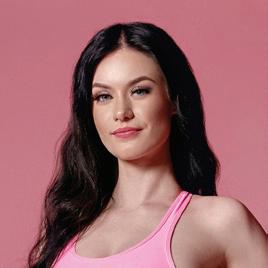
An essential approach requires sensitivity and knowledge
By Elena Biedert
The post-pregnancy period is a remarkable journey for new moms, marked by the joy of motherhood and all the physical changes and mental challenges that come with it. As fitness professionals, it’s crucial to understand that this phase is exceptionally vulnerable for new
moms after experiencing such a significant physical event. Unfortunately, many trainers are not adequately trained to handle this delicate time, leading to misconceptions and potentially harmful advice. Let’s dive into the dos and don’ts every fitness professional needs to know when working with postpartum clients.

Pelvic floor dysfunction is very common postpartum, and it can manifest in different ways or not at all if it’s asymptomatic. According to the systematic review, published in 2021, where over 35,000 women were observed, about a third of these women (31%) had urinary incontinence at three months postpartum and about the same amount (32%) at one year postpartum. Besides urinary incontinence, new moms can deal with tears, pelvic organ prolapse, heaviness, pelvic pain and other issues.
In addition to the stretched or injured pelvic floor, women end up with stretched abdominal muscles and a weakened core. Knowing how to address diastasis through specific exercises, and strengthen the core holistically without causing further harm, is essential if you work with postpartum clients
3. Offer
an Appropriate Postpartum Recovery Program
It’s very common to see programs created like a “deload version” of a regular fitness routine. Even if we have a woman with uncomplicated pregnancy and delivery and who has no symptoms. e.g., heaviness or incontinence, we still can’t skip the recovery period. Just
22 | WWW.PERSONALFITNESSPROFESSIONAL.COM | FALL 2023
|
FEATURE ARTICLE
“taking it easy” is not an appropriate rehab after such a major physical event as birth. And if a mom had a C-section, she is still recovering after a major abdominal surgery, so we need to take it into consideration and handle it responsibly. Just like we wouldn’t put someone on a regular leg day routine but with light weights right after knee surgery, we wouldn’t skip the postpartum recovery program before we start with easy training.
Fitness professionals should design individualized recovery programs that consider factors like the type of delivery, the new mom’s fitness level before and during pregnancy, and any existing conditions.
4.
Build a Network of Health Professionals
And that’s why collaborating with pelvic physiotherapists, nutritionists, pre- and postnatal coaches and healthcare providers is essential for you. This network allows fitness professionals to refer clients to specialists if they are unsure about safely training a woman or if the scope of their expertise doesn’t cover specific concerns.
5. Be Someone She Can Trust
Post-pregnancy can be overwhelming for new moms, and they need a fitness professional they can trust and confide in. Create a supportive and nurturing environment, actively listening to their concerns and progress and adjusting the program as needed.
Post-Pregnancy Don’ts:
1. Don’t Prescribe Only Kegels and Planks
While Kegel exercises and planks have their place in postpartum recovery, they are not the entire solution. If you can’t assess the pelvic floor and diastasis, refer your client to the according specialist and build your program around the specialist’s advice. Remember that strengthening the pelvic floor and addressing diastasis goes way beyond Kegels and planks. In fact, doing only these, in some cases, might mean not addressing the issue at all or even worsening the situation.
2. Don’t Suggest Avoiding Weight Training Completely
Sometimes fitness professionals are not sure how to work with a client who has just given birth, so they recommend waiting out and avoiding weight training completely or doing something like yoga instead. Weight training can be beneficial for postpartum women, but it needs to be approached with care and caution. Instead of avoiding it altogether, emphasize proper form and technique and gradually progress the intensity based on the individual’s abilities. Or, if you are not trained in this area, refer her to someone who can support her during this period.
just for 5 minutes is all new moms can do, physically and mentally. And sometimes, they don’t even have 5 minutes.
Postpartum recovery is a gradual process, and each woman’s journey is unique. Avoid pressuring new moms to adhere strictly to a specific timeline or fitness plan. Instead, support them in making sustainable progress while acknowledging their achievements, no matter how small.
5. Prescribe Rigid Meal Plans for Breastfeeding Moms
Breastfeeding moms have unique nutritional needs, and rigid meal plans may align neither with their requirements nor the daily mom-life reality. Encourage a balanced and varied diet that supports both postpartum recovery and breastfeeding while also considering individual preferences and dietary restrictions.
3. Don’t Focus Only on Deep Core and Pelvic Floor
Strengthening the deep core and pelvic floor is crucial, but it should not come at the expense of neglecting other abdominal muscles. A well-rounded approach targeting all abdominal muscles will improve overall core strength and functionality.
If the early postpartum recovery was done appropriately, your client will have a relatively strong deep core and maybe even pelvic floor muscles but could still struggle with ab exercises, withstanding the intraabdominal pressure or have diastasis. Just like in regular weight lifting, we need to build in the progressive overload here and continue strengthening the core and whole body.
4. Don’t Put Pressure on a New Mom
The “push mentality” is widespread among fitness trainers, but this is not the time for that. Sometimes eating just one healthy meal is a huge win already. Sometimes working out
As fitness professionals, it’s essential to approach post-pregnancy fitness with sensitivity and knowledge. Building a network of health professionals, educating yourselves on prenatal and postpartum health, focusing on pelvic health and diastasis recti, and offering personalized recovery programs are vital steps in supporting new moms on their fitness journey. And remember that post-pregnancy fitness is not just about physical changes. It’s about empowering new moms to embrace their strength and resilience in the motherhood journey and showing them that they can indeed feel and look great and be confident and strong in their new bodies.
Elena Biedert is an award-winning pre- and postnatal coach, internationally published author and model. Driven by her son’s traumatic birth with an unexpected c-section that almost took her life, Elena founded “Mama Fitness Coaching“ to support other mothers. With a holistic approach, Elena focuses on helping new mothers recover and reach their fitness goals post-pregnancy, so that they can feel confident and strong without sacrificing time with their loved ones. You can learn more at MamaFitnessCoaching.com or contact Elena on Instagram @mamafitnesscoaching.
FALL 2023 | WWW.PERSONALFITNESSPROFESSIONAL.COM | 23
Postpartum recovery is a gradual process, and each woman’s journey is unique.
POSITION YOURSELF AS AN EXPERT
Specialty certifications and continuing education opportunities for fitness professionals

Whether you want to delve deeper into an area of expertise or branch out into other areas, there are numerous continuing education opportunities out there waiting for you. Your expanded portfolio can be utilized as a marketable tool to enhance your credibility, showcase new skills and provide auxiliary services to clients.
Here are a handful of reputable industry resources you will want to consider when making your continuing education decisions.
Trainers! Get your BillyStix Certification today!
Differentiate yourself from other trainers by offering the newest and most exciting workout in the market today! BillyStix are weighted Stix that add leverage, force and weight to your workout. A revolutionary new product that will challenge your clients and work their muscles by combining muscle confusion with interval training for a full-body workout. Work upper and lower body, core, cardio, balance, coordination and agility. BillyStix is a 6-part Workout Series. Each workout is approximately 20 minutes long. Mix and match them.
If you run a gym or fitness studio, get the BillyStix workout going at your facility today and provide a low-impact, high-intensity option for your members to enjoy! This form of training appeals to all fitness levels, is easy to use, and is fantastic for both individual and group training. It’s simple, effective, and affordable! Use it as a stand-alone class or add it to your other classes.

The Stix were designed by a martial artist and personal trainer. The exercises are based on functional fitness and various sports including baseball, tennis, golf, iaido, escrima, etc. When you get certified, we’ll train you on how to do the BillyStix Workout to help your clients get a great workout! We provide you with a certification to teach this unique class. Once you’re a certified BillyStix trainer, you’ll have everything you need to teach a great class that offers something for everyone.
Certification is $250 per trainer and includes a set of BillyStix.
billystixworkout.com
24 | WWW.PERSONALFITNESSPROFESSIONAL.COM | FALL 2023
Free CEs from Exercise ETC!!
Exercise ETC has been supplying fitness professionals with high-quality, discounted ConEd programs since 1993 — and to celebrate our 30th anniversary we’ve got a special “Free CE” offer for PFP subscribers!
For a limited time, you can order our “Exercise to Improve Neck & Back Function” recorded webinar for free. This evidence-based webinar (regularly $25) is approved for 0.2 CECs through ACE, CSCS, NASM and NSCA as well as for 2.0 CEUs through ACSM, AFAA, BOC, ISSA and more. There is no faster way to earn CEs: Watch the 2-hour webinar on your favorite device, take a quick 20-question quiz and print your CE certificate immediately. No pur-
chase necessary.
To take advantage of this special offer, visit: exerciseetc.com/webinars_info.php?id=430. When you check out, make sure to enter coupon code PFP2023 (and hit “apply”) to order your free webinar.
A special like this is too good to last forever, so make sure to order your webinar by September 25, 2023. And make sure to check out our complete line of home study courses, webinars, live programs and free exercise videos.
Exerciseetc.com

ISSA: Shaping Global Fitness & Wellness
The International Sports Sciences Association (ISSA) is the top rated and reviewed fitness certification company and the global leader in online fitness and wellness certifications. For over 35 years, ISSA has been committed to delivering comprehensive, cognitive and practical education that's grounded in industry research. To date, ISSA has educated over 500,000 students across 176 countries, while driving toward their vision to connect 100 million people to the power of healthy living by 2030.
Develop with FiTOUR® Primary and Advanced Nutrition
FiTOUR® Certifications' latest programs are a step in the right direction for fitness professionals who are looking to confidently expand their scope of practice and help clients attain wellness goals. Since 1989, FiTOUR® is known for affordable, comprehensive, cutting-edge certifications grounded in exercise science and guidelines for safe and efficient health and fitness practice. FiTOUR® has created two certifications, FiTOUR® Primary Nutrition Certification: Theory Application; and FiTOUR® Advanced Nutrition Certification: Practical Application, that will allow trainers to make a real quantifiable impact on clients’ lifestyles. Trainers can address objectives of nutrition like: why proper nutrition is important; successful nutrition mindset; energy balance; portion and serving size control; and how to read nutrition fact labels.
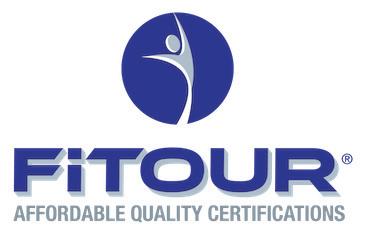
With FiTOUR®’s latest nutrition courses, trainers will be equipped to help clients looking for expert advice on nutrition and movement to max-

imize results. Trustworthy nutrition coaches provide balanced, comprehensive nutritional information and advice. There are six key areas you can address with clients after completion of the FiTOUR® Nutrition Certifications that fall within the scope of practice: principles of nutrition and food prep; food necessary for a balanced daily diet; essential nutrients and their action on the body; effects of deficiencies or excesses of nutrients; how nutrient requirements vary through the lifecycle; and information about nutrients contained in foods or supplements.
Personal trainers and fitness instructors can position themselves as true experts in the field and open doors to strong career opportunities by adding a FiTOUR® Nutrition Certification to their resume.
While rooted in Certified Personal Training certifications, ISSA now offers over 50 fitness and wellness certifications and specializations that allow you to become an expert in your desired interest areas so you can stand out in your field. Their courses include CPT en Español, Health Coaching, Yoga 200-Hour Teacher Training, Nutrition, Strength and Conditioning, Functional Aging, Group Fitness, CPR and more. Their brands include the ISSA Yoga & Wellness Academy and the Functional Aging Institute. ISSA is constantly adding new brands, certifications, continuing education and support resources in an effort to provide you with ongoing educational and career opportunities.
ISSA takes pride in partnering with many different types of organizations to promote healthy living around the world and foster fruitful relationships with like-minded companies. Our Preferred Partner programs can help you reach your staffing and recruiting needs by connecting you to students and graduates looking for work. There are also many ways for brands to collaborate with ISSA, including direct outreach to our audience, co-branded campaigns, discount promotions and more.
ISSAonline.com
FiTOUR.com
Unlocking Expertise: Elevate Your Fitness Journey with Merrithew’s STOTT PILATES ® Certification
Over the last three decades, Merrithew’s mind-body education programs have evolved based on the latest research in health and fitness. Working with a team of physical therapists, sports medicine and fitness professionals, Merrithew has created results-driven programming for exercisers of all ages, levels and abilities. Its mind-body education programs include: STOTT PILATES®, STOTT PILATES Rehab, ZEN•GA®, CORE™, Total Barre ®, Halo ® Training and Merrithew™ Fascial Movement.
STOTT PILATES is a contemporary approach to the original Pilates method based on modern principles
of exercise science and rehabilitation that is recognized worldwide as the ‘Ivy League’ of Pilates education.
Certified Instructors are sought after to work across a broad range of positions in the health and fitness industries, from studios and clubs to rehab and therapy practices. With a STOTT PILATES education, there is no limit to career opportunities.
STOTT PILATES Certified Instructors who complete eight workshops within each category are eligible to receive a speciality designation in a field of their choice while earning CECs. Merrithew’s Specialty Programs help fitness professionals develop the specialized skills they need to work with specific groups, including amateur or elite athletes,
pre and post-natal, active aging and rehab clients.
Merrithew Instructor Training and certification programs are available at nearly 200 locations around the globe. These instructor training courses and workshops are offered at our Corporate Training Center in Toronto, through partner Training Centers and at Mindful Movement Symposiums. Merrithew guarantees the same high-quality instruction everywhere.
merrithew.com/instructor-training
MicroFit, Inc. Offers It’s HealthWizard Software Certification Training to PFP

MicroFit, Inc., founded in 1986, is the longest surviving fitness and wellness assessment provider in the health and fitness industry. We have served colleges & universities, health clubs, wellness centers, medical fitness, corporations, numerous governmental agencies, all branches of our U.S. Military worldwide as well as police and fire departments across our nation to enable them to achieve and maintain the highest level of mission readiness.
Unfortunately, there are many independent personal trainers who are still unfamiliar with what we do and
why! We are motivated to introduce as many PFP trainers as possible to our company with a new approach. Our Specialty Certification Training will include a trial version of our HealthWizard software at no cost or obligation and will cover:
1. How to conduct a comprehensive fitness & wellness assessment in an efficient and cost-effective manner.
2. Ways to monetize your HealthWizard assessment services and to grow your business as a result.
3. How to attract more outside corporate and medical referrals by using our
superior “Evidence-Based Outcomes” (analytics) using a strategic plan with a proven track record.

4. Ways to differentiate yourself from the competition by providing a higher level of service using our fitness and wellness assessment technology solutions.
www.microfit.com
26 | WWW.PERSONALFITNESSPROFESSIONAL.COM | FALL 2023
Trusted Fitness Education for Over 45 Years
Founded in 1977, the National Exercise Trainers Association (NETA) is proud to be one of the longest-standing certification and education providers in the fitness industry — helping exercise professionals achieve their personal and professional goals for over 45 years and still counting. NETA’s mission is to support and inspire the development of well-qualified fitness professionals through the delivery of high-quality educational programs incorporating evidence-based research and practical application. We are committed to guiding fitness professionals throughout their careers by offering affordable and accessible educational opportunities. NETA offers both an NCCA-accredited Group Exercise Instructor Certification (NETA-CGEI) and NCCA-accredited Personal Trainer Certification (NETACPT), demonstrating our commitment to the highest-quality standards for professional certification programs. As a Registered Yoga School (RYS), NETA

also offers a Yoga Alliance-approved 200-hour Yoga Teacher Training Program, which culminates in the NETA Yoga Teacher Certification.
Ready to specialize? NETA provides a wide variety of specialty certificate programs including, but not limited to, Indoor Group Cycling, Kettlebell, Pilates Mat, Pilates Reformer, Barre, Senior Fitness, Youth Fitness, Pre-Post Natal Fitness, Nutrition Coach and Wellness Coach. Specialty certificates may be earned by attending a live workshop or self-directed online programs. To support ongoing professional development and continuing education, NETA delivers live interactive workshops, both in-person and virtual, as well as an extensive library of home study courses in both print and online formats. NETA is an approved continuing education provider with ACE, AFAA, and NASM. Earn your CECs with NETA!
NETAfit.org
Make $18,903 More on Average as an NSCA-CPT®
You may know us for the CSCS®, but what about our personal training equivalent, the NSCA-CPT? Offering the same prestige and science-based preparation, the NSCA-Certified Personal Trainer® certification best suits general and special population trainers. Not only was it the first personal training certification to earn accreditation, but it’s also proven to earn you the most profit. NSCA-CPTs make more on average than any competing certification at $65,035 — over 40% above the average of $46,132 — according to PTDC’s 2021 salary survey. Why? It could be because our exam is tough, requiring comprehensive knowledge. Or perhaps it’s that our program prepares you to excel with advanced abilities for client consultation, program planning and exercise technique. Either way, you can imagine how far 40% more funds could take you.

Keep in mind, your certifying organization is just as important as your certification. You want an organization with a longstanding record that’s as invested in your future as you are. We’re a not-for-profit educational association and one of the only credentialing agencies that publishes peer-reviewed research. Continuing education opportunities, like our Personal Trainers Virtual Conference, help you learn the science — and how to apply it. Plus, when you join the NSCA community, your network expands to over 60,000 certified professionals. What’re you waiting for? Get the preferred certification of top commercial fitness companies and sports organizations and transform your passion for fitness into a viable career path.
NSCA.com/nsca-cpt
CONTACT INFO BillyStix billystixworkout.com Bill@UltimateHealth.Coach 310.413.0514 Exercise ETC Exerciseetc.com info@exerciseetc.com 800.244.1344 FiTOUR FiTOUR.com clara@fitour.com International Sports Sciences Association (ISSA) ISSAonline.com Partnerships@issaonline.com 800.545.4772 Merrithew merrithew.com/instructor-training Educationadvisor@merrithew.com 800.910.0001 MicroFit www.microfit.com info@microfit.com 800.822.0405 National Exercise Trainers Association (NETA) NETAfit.org neta@netafit.org 800-237-6242 NSCA NSCA.com/nsca-cpt Blake.brightwell@nsca.com 719.632.6722
NEW ON THE MARKET
The latest trends in fitness equipment

FAREL HRUSKA’S REVIEW: BILLYSTIX
BillyStix, created by Bill Shuttic, are fun and effective for a unique workout meant to challenge the entire body with dispersed and variable load. I enjoyed being able to try two different weights and found it interesting to mix up the load on either side of the body causing even more of a balance challenge. I have used a variety of weights in my workouts and with my clients for many years so a new option is a welcomed addition! I tried a few of the workouts by Shuttic on YouTube and they were great! It was fun to be able to see the different grips on the equipment that changed the variables of the exercise. I definitely enjoyed this fitness tool. billystixworkout.com
POWERBLOCK PRO 100 EXP

Embracing both the tradition of PowerBlock and state-of-the art engineering, the Pro 100 EXP delivers unmatched comfort, reliability and performance to fitness enthusiasts of all levels. Including: 4-stage system increases customers options and weight range up to 100lbs; new weight plate design provides improved balance and compatible with new Straight & EZCurl Bars and new Kettleblock handle. powerblock.com
LALANNE BAND FIT KIT
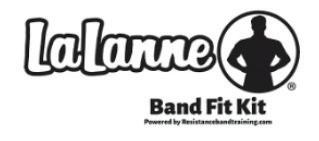

Jack LaLanne “The Godfather of Fitness” was the pioneer of the first resistance band training device in 1954. They were called “The Glamor Stretch” for women and “The Easy Way Conditioner” for men. Jack’s mission in life was to empower people to get healthier by teaching them how to easily create and follow a sustainable exercise routine designed around the use of simple, convenient training tools. It’s no surprise that resistance bands became a staple in Jack’s personal and professional fitness journey. shop.resistancebandtraining.com/ product-category/jack-lalanne-bandfitness
PLANES OF MOTION PRACTICAL APPLICATION
This new online course blends fitness training and occupational therapy, so you can provide clients with a fitness program that supports the aging process to maintain quality-of-life. Fit pros will review the three planes of motions and how to incorporate them into private or group training, how the brain initiates movement, how the body ages, exercises that support Activities of Daily Living (ADLs) and Instrumental Activities of Daily Living (IADLs) and how to teach seniors simple and safe methods for performing their daily ADLs. medfitclassroom.org/planes

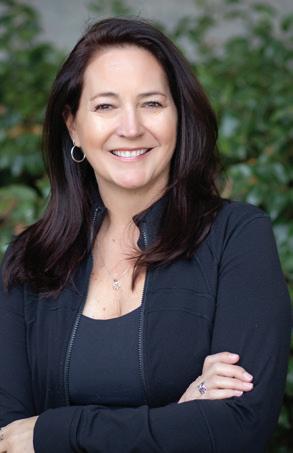
ENTER TO WIN ONE OF 3 FREE FITOUR CEC COURSES
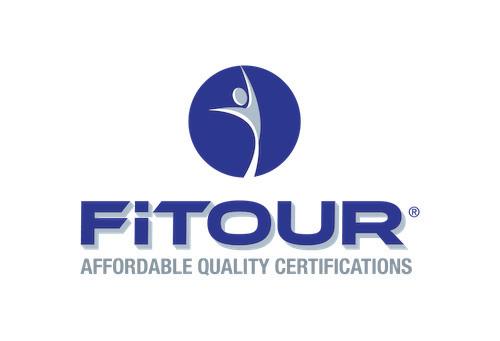
Simply scan the QR code, fill out the entry, and you will be entered to Win one of 3 FREE FiTOUR® ACE, AFAA or NASM CEC Courses ($39.99 value) courtesy of FiTOUR®!
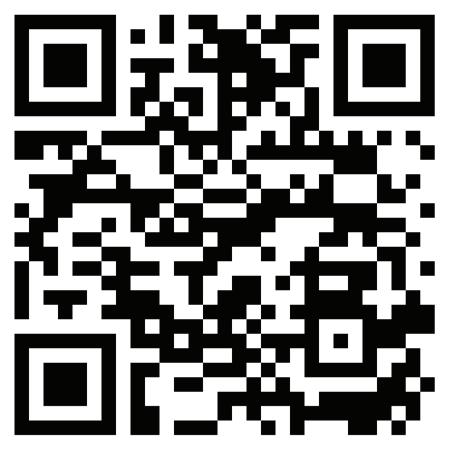
28 | WWW.PERSONALFITNESSPROFESSIONAL.COM | FALL 2023
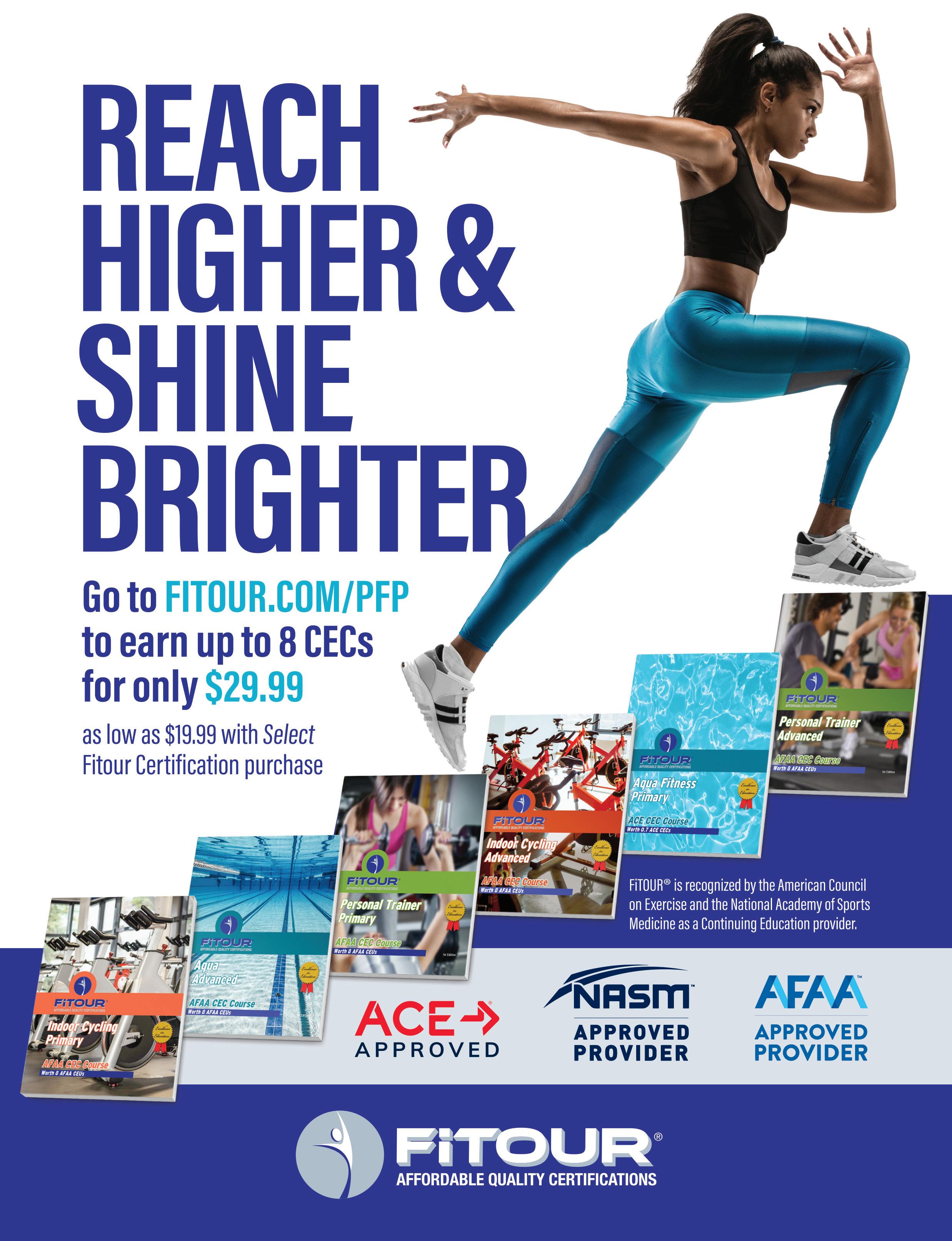
DIVERSITY, EQUITY AND INCLUSION
 By Gail Bannister-Munn www.thebannistermethod.com
By Gail Bannister-Munn www.thebannistermethod.com
Unraveling the Distinction Between Fitness Professionals and Fitness Influencers
In the age of social media, the fitness industry has witnessed a surge in both fitness professionals and fitness influencers viewings for attention and recognition. These two groups may seem similar at first glance; however, let’s take a deeper dive into the differences in their expertise, intentions and the impact they have on the fitness industry. I hope to shed some light on the contrasting attributes of fitness professionals and fitness influencers.
As fitness professionals, we do our best to lead with research and best practices to help our clients on a daily basis. During the pandemic, we saw an influx of workouts posted by influencers on social media. Fitness professionals were fighting a battle to prevent misinformation from spreading. Now, post-Covid, we are still working to be an experienced presence online, emphasizing safety and refining our education and hard-earned credentials.
While fitness professionals and fitness influencers both contribute to the fitness landscape, their roles and impact differ significantly. Fitness professionals have formal education and certifications, allowing them to provide knowledge and expertise to guide their clients towards their fitness goals safely and effectively. On the other hand, fitness influencers' popularity is largely driven by their ability to engage and inspire audiences, even though their content may not be backed by science. Recently, I heard a quote that resonated with me: “Brushing your teeth daily doesn’t make you a dentist.”
Defining Fitness Professionals
Fitness professionals are individuals who have recognized accredited certifications and years of expertise in various areas of the fitness industry (personal training/group exercise). Many have academic backgrounds, such as degrees in exercise science, kinesiology, sports medicine, nutrition background or related fields. Additionally, many fitness professionals have specialized certifications from reputable organizations such as the National Academy of Sports Medicine (NASM), American Council of Sports Medicine (ACSM), Aerobics Fitness Association of America (AFAA), American Council on Exercise (ACE) and The International Sports Sciences Association (ISSA). Their knowledge, experience and coaching allows fitness professionals to design personalized workouts and class routines, as well as assess their clients’ fitness levels and establish goals for them. Many fitness professionals work at fitness centers or health clubs, or have their own personal branded businesses providing one-on-one training or leading group fitness classes. Their primary goal is to help clients achieve their fitness goals safely and effectively, prioritizing health and wellness over aesthetics.
Understanding Fitness Influencers
Fitness influencers are individuals who leverage their social media presence to a large following, often focusing aesthetics and physical appearance. Unlike fitness professionals, many influencers do not have formal education or certifications in fitness-related fields. Their rise to fame is often due to their ability to connect with their audience, showcase their own fitness journeys and offer motivational content.
Fitness influencers usually share their workouts, nutrition tips and lifestyle choices, attracting followers who seek inspiration, motivation, or entertainment. Many of them may be mirroring fitness professionals' workouts on social media. Other influencers’ content will not be rooted in evidence-based practices. What’s often lacking is the “how to” or breakdown of an exercise progression. That said, many of these workouts are not attainable to the fitness novice. Fitness influencers typically share generalized workouts that are geared strictly for their goals and personal aesthetics, and share content aimed at a broad audience. Additionally, influencers’ focus on physical appearance may overshadow the importance of overall health and well-being.
Credibility and Accountability
Fitness professionals are held accountable by industry standards, codes of ethics and certification boards. They must renew their certifications annually or every two years, and maintain a current CPR certificate in order to work and train in fitness facilities. Fitness influencers are not faced with the same level of scrutiny or bound by professional guidelines. They depend on “likes” which motivates them to continue creating content and focusing more on gaining popularity, brand partnerships and self-promotion.
As you embark on your fitness journey, it is crucial to recognize the difference in these two roles. Make informed choices based on your individual needs and goals. Collaborating with fitness-certified professionals and maintaining an enthusiasm for health and wellness will lead you to a successful career in this rewarding industry. Good luck!
Gail Bannister-Munn works as a flexibility, yoga, and Pilate’s coach with the NY Jets football team and pro hoops basketball. She currently holds certifications in several different disciplines, including NASM, AFAA, Fascial Stretch Therapist L3, Yogafit 500 hours, AFAA, STOTT PILATES® Mat 1 & 2, Powerhouse Mat Pilates I & II, and is an NASM and AFAA continuing education provider, which enhances her coaching abilities to her athletes, staff and her classes.
30 | WWW.PERSONALFITNESSPROFESSIONAL.COM | FALL 2023







us on social to stay connected! @pfpmedia
Follow
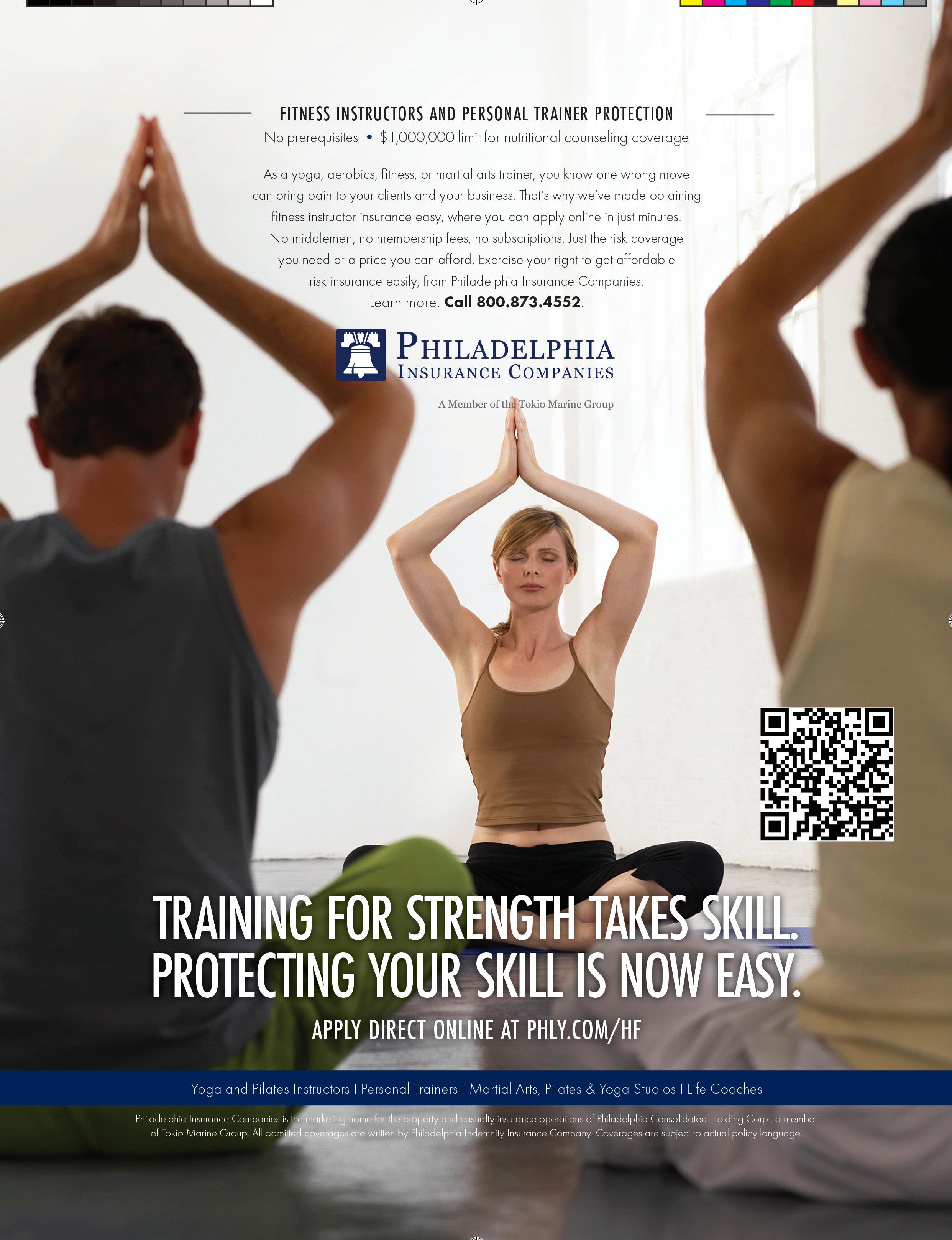






 By Gail Bannister-Munn
By Gail Bannister-Munn




 By Nicole Arseneau
By Nicole Arseneau













 By Dr. Meredith Butulis MeredithButulis.com
By Dr. Meredith Butulis MeredithButulis.com
































 By Gail Bannister-Munn www.thebannistermethod.com
By Gail Bannister-Munn www.thebannistermethod.com







